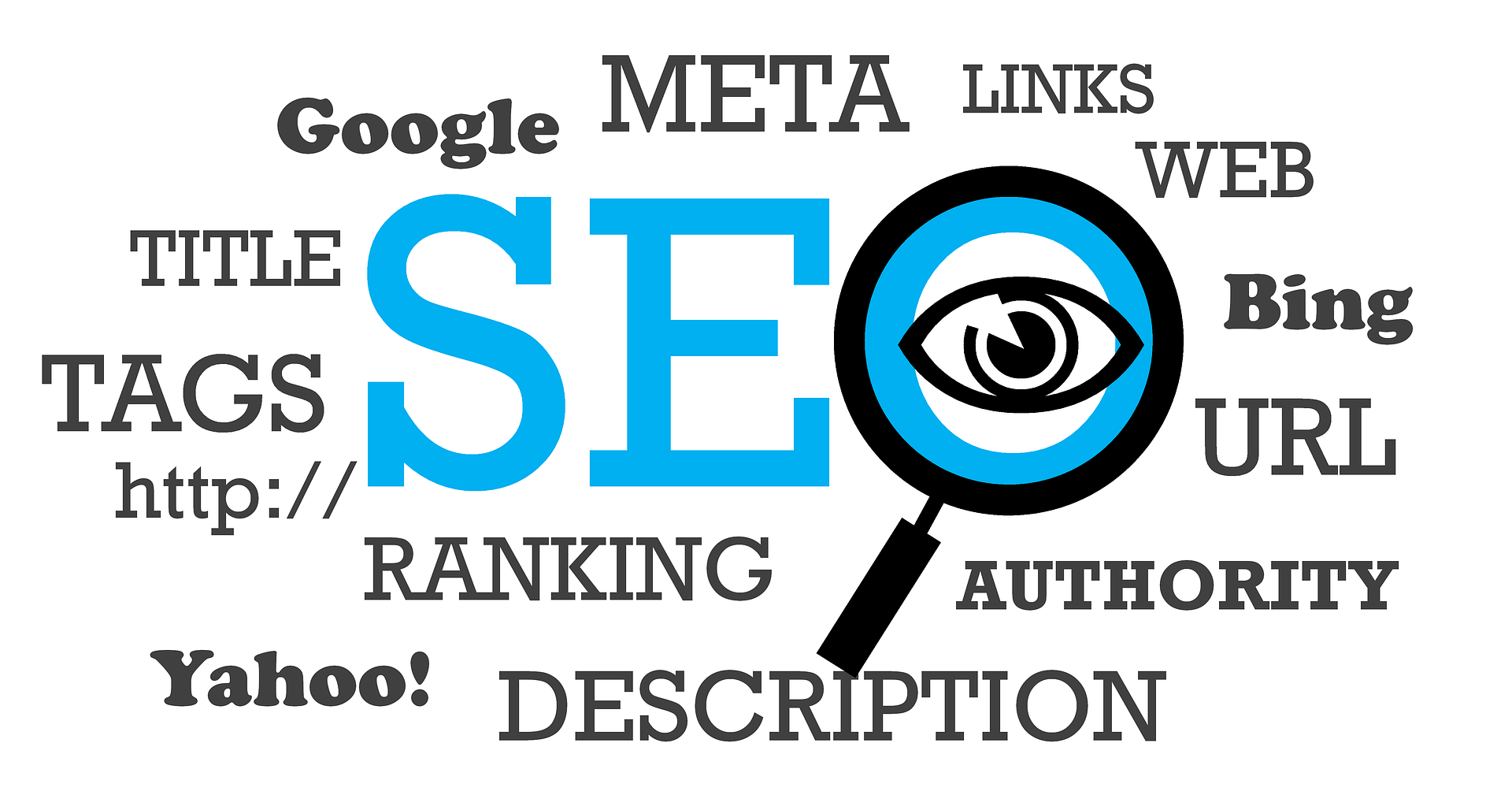 Creating a magnetic website (aka: a website that sucks people in) is an ongoing job. The good news is that the ongoing work can be made a whole lot easier with the right planning. You will notice that a lot of the tactics we discuss in this post will have an equal amount to do with not repelling people from your website.
Creating a magnetic website (aka: a website that sucks people in) is an ongoing job. The good news is that the ongoing work can be made a whole lot easier with the right planning. You will notice that a lot of the tactics we discuss in this post will have an equal amount to do with not repelling people from your website.
A word to the wise
Before you go any further you need to have answers to the following questions:
- Who is your target audience/s?
- How does your target audience consume information?
- Typically, how does your target audience find your website?Example: via Google organic search or via social networking sites like LinkedIn
- How are you different to your customers/competitors?
- What types of marketing do you respond to?
I’ve asked you to think about these questions, not because I’m going to directly address any of them, but because it’s essential you know the answers if you do really want to increase traffic to your website. This is because each of the steps we mention below assumes you have these answers in mind.
Increase traffic to your website by following these 5 steps
STEP ONE: Have a plan
I’m being purposefully broad here. When I say ‘have a plan’, I literally mean have a plan for everything. Have a digital marketing plan, have an SEO plan, have an ongoing optimisation plan and a website launch plan. I’m not saying you can’t still do things ‘on the fly’, but I am saying that with a plan, you’ll be able to easily track what is and isn’t working and then adjust accordingly. A plan also gets you to think in real terms about the feasibility of your ideas. After all, if you’re thinking of increasing visitors to your website from social sources, you’ve got to be aware that you’re going to have to put the time in. A plan will help you think these things through so that you can allocate the necessary resources.
Plans that will drive traffic to your website
1. A launch strategy/plan
This might be for your brand new website or it might be for a new product or service. Whatever it is, having a plan for this specific occasion can get you 3-6 months ahead of the game, traffic-wise. After all, it’s about building interest and curiosity so that when you do finally launch, they flock.
2. A content strategy/plan
Make sure you know what types of content you’re going to ‘put out there’ and that you have a content plan – a rough list of all those topics you will addressing via the content you publish. This will include a plan for the emails you send out, the blog posts you plan to write, the press releases you will submit and whatever other types of content you plan to use.
STEP TWO: Optimise your website for conversion
…and do it all the time
I’d just like to start by saying that optimising your website for conversion is not a once-off action. You can’t put in some buy buttons, colour them red and then decide that’s it forever more. Website optimisation is ongoing. Haven’t you ever noticed how often your favourite online retailers change things about? This is true of sites like Amazon, Facebook, Google, John Lewis, etc and it will be so long as the web continues to change. Remember, your website is never done, especially if you have a mind to continue improving it for conversion.
Do your on-page SEO properly
Make each title tag and description unique. No duplicates please – this doesn’t help you get click-throughs from the search result pages and it certainly doesn’t help search engines understand the focus of the content on each page.
Here’s an example of how our homepage shows up in the Google search results:

Note: the title is specific to the page as is the description. You won’t find the same title tag or meta description on any other page of the site.
Apart from ensuring you’re doing all the meta data properly, use keywords throughout your content and if possible, niche keywords, or longtail keywords with low competition. Also, make use of headings (H1’s, H2’s, etc) and keep the 4 U’s in mind when crafting headings: useful, unique, ultra-specific and urgent
Use call-to-actions
Call-to-actions tell your audience what to do NEXT and if possible, give them an incentive to take the action you desire. This doesn’t necessarily help to drive traffic to your website, but it does help create an engaged audience and increase the likelihood of conversions. A call to action might come in any of the following forms:
- A ‘buy now button’
- A ‘download now’ link
- A newsletter sign-up form
- An ‘add to shopping cart’ or ‘add to wishlist’ button
- A call now prompt and a telephone number
Make your website forms easy to submit
In any service or lead generation business, website forms are an essential part of your site. Here are a few tips on how to increase the chances of a user filling one out:
- Only use the fields that are absolutely necessary
- Make your form visible
- Avoid using CAPTCHA code images when possible (here are a few alternative options)
- Make sure your website users know how you’re going to use their email address. Will you subscribe them to your newsletter? Will you sell their email address to another company? If you don’t tell them, they may be wary of submitting an enquiry.
- Have an enticing ‘submit’ button. Try something different like ‘lets go’ or ‘start now’.
STEP THREE: Build your audience
In order to build your audience, you first need to understand that you can’t do this without providing value. If you’re going to do what everyone else does, or do your digital marketing shoddily, you will not build an audience. In fact, you’ll probably just build a bad reputation.
Here are a few good ways to build your audience and increase traffic:
1. Have good content, not once but always. Every piece of content you publish should be something you’re proud to talk about or to reference. Make sure this content makes use of enticing headlines and that it is visually appealing.
2. Keep your readers intrigued. You can do this by making sure that your blog or your website includes ‘related posts’ or ‘popular posts’, or ‘related products’ (ideally with thumbnail images). This will increase the amount of content your users view and ultimately increase the chances of them finding something they like which they can then share with others. The end goal: more traffic.
3. Include call-to-actions on every blog post. In fact, make sure there’s a call-to-action on every page of your website. This could be a buy now button, or a prompt to subscribe to your newsletter, or even a simple prompt to fill out the web form. Whatever it is, make sure that each page of your website serves a purpose.
4. Use an email newsletter sign-up form and if possible, place them all over your website. Email is a great form of marketing as it allows you to send a message to those that have explicitly stated their interest, in the place that they are most likely to read it – their inbox. Don’t underestimate the power of email. And when you do send emails, make sure that they provide value. If your subscriber can get the same thing on your website, they won’t keep opening or reading your emails. So, make sure they’re different.
5. Partake in active social engagement. HUMAN engagement. Don’t forget that behind all those hash tags, and links, there are real human beings. Your job is to reach them on an emotional level. This will ensure they remember you. Here are some great tips from an infographic by BlueGlass:
- Retweet valuable posts (stokes people’s egos)
- Share links of posts you enjoy and MENTION THE AUTHORS
- Make insightful comments on content
6. Do guest blogging. There are a lot of people that um-and-ah over this particular digital strategy but the fact is, all the big players are doing it, at least in the digital industry (and these are probably the best people to go by!). If you’re not sure whether it’s right for you, read our post on guest blogging. If you are willing to go with it, make sure you are guest blogging in the places your target audience will frequent (otherwise, what’s the point?). Guest blogging is also a good way to network online, naturally. It will help you to build a mutually beneficial relationship with other businesses and writers.
STEP FOUR: Be SO social
I’ve mentioned it above, but I’m mentioning it again, because when it comes to growing your audience online, social is a big one. Done well it can help you increase traffic exponentially, especially if what you post gets shared by someone with a lot of followers.
If you are going to go SO social, here’s my first tip: start by getting off EVERY platform out there. Yeah, G+ is the future (and the present), yeah everybody is on Facebook, yeah LinkedIn’s the place for professionals, but which is the place for your business? Honestly, just log into your analytics account and check the stats. Which platforms are a waste of time right now (assuming you’re already actively using them)? Stop wasting your time doing a lot in a mediocre fashion and focus on doing a little really well.
STEP FIVE: Do your digital marketing
A standalone website won’t make them come. You need to drive them (your target audience) to it. Here are some of the channels that can help you do this:
- Email marketing
- Content marketing
- Social media marketing
- Ongoing on-page SEO
- PPC
- Linkbuilding (as naturally as possible – guest blogging, social networking, etc)
- Online Partnerships (affiliate marketing, co-branding, link building, sponsorship)
Summing it up…
Here’s the summary of everything above. To drive more targeted traffic to your website, focus on doing the following:
- Make plans
- Optimise your site for conversion
- Build your audience
- Be SO social
- Do your digital marketing
If you do all of the above, I can guarantee that you will increase your overall website traffic.
Does it all look like too much?
If everything we’ve mentioned above looks as though it’s a little too much to handle, give us a call or get in touch via our contact form. We can help you create digital marketing plans, content plans and email plans. We can also get you started using the digital channels that are right for your business.










